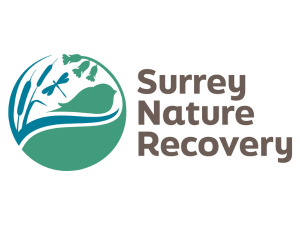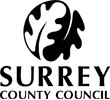
Public Consultation on the Draft Surrey Local Nature Recovery Strategy (LNRS)
To find out more about our plans for nature recovery and have your say visit our Surrey Nature Recovery Commonplace website.
On the site you can:
- Download and view the draft LNRS documents
- Participate in the public consultation
Introducing Surrey Nature Recovery
Page contents
- What is a Local Nature Recovery Strategy?
- Why does Surrey need a Local Nature Recovery Strategy?
- Who is funding preparation of the strategy?
- When will the strategy be produced?
- What have we already done to protect nature in Surrey?
- How do I get involved?
- How does the LNRS interact with Biodiversity Net Gain?
What is the Local Nature Recovery Strategy?
The Local Nature Recovery Strategy is a new spatial strategy to identify locations to improve nature and provide other environmental benefits, such as carbon sequestration, flood regulation and access to nature-rich spaces where this is most needed for health and wellbeing.
The Local Nature Recovery Strategy will:
- Set out priorities for nature's recovery
- Map the most valuable existing areas for nature
- Map specific measures for creating and improving habitat for nature and wider environmental goals
Required by law under the Environment Act 2021, every county in England will produce a Local Nature Recovery Strategy. These strategies will work together to restore, create and connect habitats across England.
Decisions about where and how to recover nature will be reached through consultation with a wide range of people and groups in each county, from ecologists and community groups to health professionals and local businesses.
It is anticipated that Local Nature Recovery Strategies will help to direct future funding streams including agri-environment funding. They will also link with Biodiversity Net Gain, which is a new planning requirement to ensure habitat for wildlife is in a better state than it was before development.
Read more about Local nature recovery strategies (GOV.UK).
Why does Surrey need a Local Nature Recovery Strategy?
Surrey supports an amazing diversity of landscapes and wildlife, from ancient woodland and treasured chalk downlands to large expanses of open heathland and beautiful historic parklands. Surrey is also home to the Surrey Hills National Landscape, which has internationally important habitats. This impressive nature makes Surrey a highly attractive place for people to live and for businesses to locate.
This nature underpins our lives. From street trees to rivers, nature in Surrey provides us with food, water and clean air. Walks in nature help us stay physically and mentally healthy, and urban and rural wildlife sightings bring joy to many people.
However, we've witnessed a huge deterioration in the health of Surrey's natural environment due to complex factors, including pollution, pesticide use, diseases, loss of traditional land management practices and climate change.
The Local Nature Recovery Strategy for Surrey will help us reverse this nature loss by setting out where and how to manage land and water to create a network of nature-rich sites which are bigger, better managed and more joined-up across the county and across the country.
Who is funding the preparation of the strategy?
The Department for Environment, Food and Rural Affairs are providing funding to support the development of Local Nature Recovery Strategies. Surrey County Council and other local organisations are also supporting the local evidence base to support the strategy.
When will the strategy be produced?
During 2024 we undertook a broad program of workshops and hosted an online survey to gather your thoughts on the priorities for nature recovery in Surrey. This data, combined with an assessment of existing key policies and strategies has resulted in the draft LNRS, available for public consultation in Summer 2025.
Following the public consultation we will endeavour to complete the final draft by the end of 2025 with cabinet approval planned for early 2026.
The Surrey LNRS is supported by a steering group comprised of key partners and stakeholders. The steering group is chaired by Surrey County Council's Director for Environment.
The following organisations are members of the steering group:
- Surrey County Council
- Surrey Nature Partnership
- Surrey Wildlife Trust
- Surrey Biodiversity Information Centre
- Guildford Borough Council (representing Local Planning Authorities in Surrey)
- Natural England
- Forestry Commission
- Environment Agency
- National Farmers Union (NFU)
- Country Land and Business Association (CLA)
- Hampton Estate
Each District and Borough in Surrey has a critical role in the development of the LNRS as Supporting Authorities.
What have we already done to protect nature in Surrey?
There are more than 700 Local Wildlife Sites across Surrey, in addition to the many nationally protected sites. The Surrey Nature Partnership has also identified Biodiversity Opportunity Areas (BOAs), which aim to reverse nature loss by identifying the best areas to restore, enhance and reconnect priority habitat. We will take these Biodiversity Opportunity Areas into account when producing the Local Nature Recovery Strategy for Surrey.
Learn more about Biodiversity Opportunity Areas (Surrey Nature Partnership).
For a more detailed Geographic Information System (GIS) map view the Surrey Interactive Map and select the data layer named 'Environment - Biodiversity Opportunity Areas'.
How do I get involved?
We want everyone in Surrey to be talking about the Local Nature Recovery Strategy and the habitats and species it seeks to protect and enhance.
Keep an eye out on this page and on our commonplace for opportunities to engage with the LNRS.
If you have any questions or data you think it would be helpful for us to have, please email nature@surreycc.gov.uk
How does the LNRS interact with Biodiversity Net Gain?
For full information on Surrey’s approach to Biodiversity Net Gain visit the dedicated webpage.
Biodiversity Net Gain (BNG) is an approach to development and land management that aims to leave the natural environment in a measurably better state than it was before. Schedule 7A of the Town and Country Planning Act 1990 makes it mandatory for all non-exempt developments requiring planning permission to demonstrate a 10% net gain in biodiversity.
The LNRS impacts BNG through a strategic significance multiplier that provides a ‘boost’ to the unit value of habitats where they are identified as being locally important for nature conservation. It is divided into three categories: high, medium and low. Different rules apply before and after the LNRS is published.
Until the LNRS is published, existing local biodiversity policy and guidance should be used to inform proposals and decisions. This includes the Biodiversity Opportunity Area Policy Statements (Surrey Nature Partnership) documents listed below.
- The basis for realising Surrey's ecological network
- Thames Valley Biodiversity Opportunity Area Policy Statements
- Thames Basin Heaths Biodiversity Opportunity Area Policy Statements
- Thames Basin Lowlands Biodiversity Opportunity Area Policy Statements
- North Downs Biodiversity Opportunity Area Policy Statements
- Wealden Greensands Biodiversity Opportunity Area Policy Statements
- Low Weald Biodiversity Opportunity Area Policy Statements
- River Biodiversity Opportunity Area Policy Statements
- Biodiversity Opportunity Area Objectives and Targets Summary
To view the boundaries on a GIS map, see Surrey Interactive Map and select the data layer named 'Environment - Biodiversity Opportunity Areas'.

